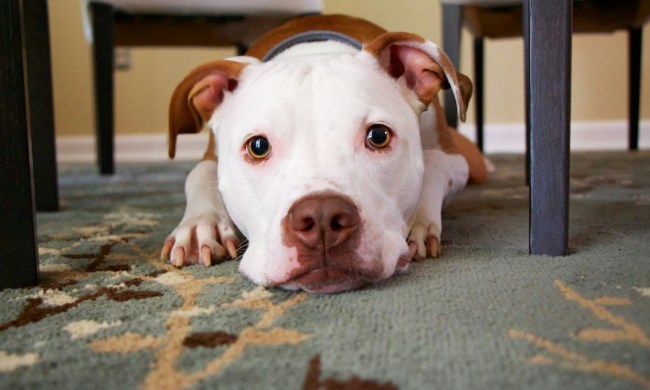Amid the chaos of the Taliban takeover of Afghanistan, many unique stories have emerged. One particularly dramatic story began in the late days of August when an image of working dogs in carriers on the grounds of Hamid Karzai International Airport in Kabul caused an outcry of emotion online — were American military dogs being left in Afghanistan? Who are these dogs, and what will happen to them?
People from all corners of the globe were worried about these four-legged angels, but thanks to some incredibly brave and generous people from the International SPCA and Kabul Small Animal Rescue, efforts to evacuate dogs from Afghanistan are still being made to this day. Thank you, heroes! These are the events you need to know about.
Were military dogs left behind in Afghanistan?
From what is currently known, it appears that no United States military dogs were left in Afghanistan. Here’s what we know:
- On August 30, a now-viral image appeared to show dogs in carriers sitting in the Kabul airport, unable to evacuate the country.
- Social media posts spread both true and false information, sparking confusion and outrage within hours.
- The U.S. government confirmed that all military working dogs were evacuated alongside the rest of the troops.
- Kabul Small Animal Rescue and several partner organizations, including SPCA International, are continuing efforts to gather and care for hundreds of stray and domestic animals in Kabul until they can safely be transported to the United States.
Read on for the rest of the details on this dramatic, yet hopeful, story.
The image that sparked debate
The chaos began on August 30, amid the American withdrawal from Afghanistan, when U.S. Rep. Madison Cawthorn posted an Instagram photo appearing to show dozens of animal carriers sitting in front of a helicopter in Kabul. The lawmaker from North Carolina originally captioned the post, “Photo of our American service dogs left behind in the airport.”
As the photograph continued to circulate, many were quick to speak up in confusion and outrage over the supposedly abandoned dogs. In one post, former Navy SEAL Jonathan Gilliam claimed on Twitter, “@DeptofDefense has ordered ALL military working dogs to be left behind in #Afghanistan.” This claim cannot be supported.
Who are the dogs in the picture?
The Biden administration quickly responded to concern over the dogs’ fate. On August 31, Pentagon press secretary John Kirby announced via Twitter, “To correct erroneous reports, the U.S. Military did not leave any dogs in cages at Hamid Karzai International Airport, including the reported military working dogs. Photos circulating online were animals under the care of the Kabul Small Animal Rescue, not dogs under our care.”
The following day, Rep. Cawthorn changed the caption of the original Instagram post. It now reads, “Contract service dogs left behind in Kabul.”
Although contract dogs are not owned by the military, they often perform many of the same tasks, including explosives detection and search and rescue. The canines shown in carriers in the viral photo belong to Kabul Small Animal Rescue — the contractor, in this case. This organization is also in charge of efforts to get these animals out of the country since they were not allowed to board U.S. military aircraft as the troops left Afghanistan.
Kabul Small Animal Rescue makes a big difference
Luckily for the dogs at Karzai International Airport, leaders of the Kabul Small Animal Rescue (KSAR) and several international organizations are working tirelessly to keep them safe. According to the SPCA International, which is in contact with KSAR, Charlotte Maxwell-Jones was able to confirm that many of the dogs were released into the Kabul airport on the same day the photo was taken, so the pups were not confined for long.
Maxwell-Jones, the founder of KSAR, remains in Kabul in an effort to rescue as many animals as possible (it’s not just dogs). On the KSAR Facebook page, she describes her daily escorted trips into the Kabul airport and surrounding areas as she and her team gather as many dogs as they can rescue. Her heroic efforts are far from over.
Looking ahead
Although Maxwell-Jones and her team cannot release many details about their animal rescue efforts due to privacy and safety concerns, she has told several news outlets that she is safe. She also continues to make posts on KSAR’s Facebook page. Maxwell-Jones told television station WVLT that she refuses to leave the country until the dogs can safely evacuate as well.
While rescue efforts, including planning possible exit flights, are ongoing, no dates or details have yet been confirmed. Rest assured, though, Kabul Small Animal Rescue and everyone who supports them are working tirelessly to get these animals somewhere safe.
If you’d like to stay up to date on the efforts of Charlotte Maxwell-Jones and Kabul Small Animal Rescue, you can give them a follow on their Facebook page. There is also a GoFundMe set up in support of KSAR if you are able and willing to donate.



